The LEGO Architecture Skyline series started back in 2016, with two sets; the #21027 LEGO Architecture Berlin Skyline, and the #21028 LEGO Architecture New York City Skyline. The series proved to be very popular with adult LEGO fans and collectors, so in 2017 three more sets were added; the #21032 LEGO Architecture Sydney Skyline, the #21033 LEGO Architecture Chicago Skyline, and the #21034 LEGO Architecture London Skyline. They were followed by the #21039 LEGO Architecture Shanghai Skyline, and the #21047 LEGO Architecture Las Vegas Skyline in 2018. This year we got two new skyline sets; the #21043 LEGO Architecture San Francisco Skyline, and the #21044 LEGO Architecture Paris Skyline. Both sets have some interesting features to let’s check them out. 🙂
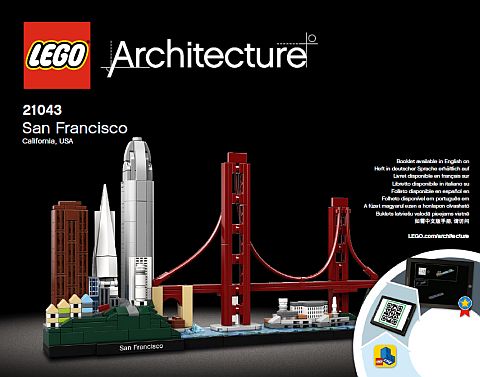
The #21043 LEGO Architecture San Francisco Skyline features iconic San Francisco sights and famous landmarks, including the Painted Ladies buildings, 555 California Street, the Transamerica Pyramid, Salesforce Tower, Coit Tower, Fort Point, Golden Gate Bridge and Alcatraz Island. As usual with this series, the included booklet contains information about the designer, the architecture and history of each attraction, as well as historical facts about San Francisco and its architectural heritage. So, even if you are not as familiar with a particular city in the series, you can learn some interesting facts. I always enjoy reading this section.
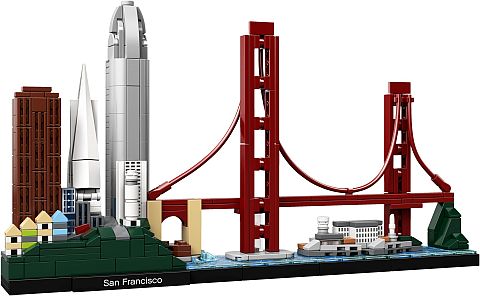
The most striking feature of the #21043 LEGO Architecture San Francisco Skyline set is that it uses forced-perspective techniques in the construction of the bridge to give the skyline greater depth. I believe this is the first time we see the use of forced-perspective in an official LEGO set. It looks brilliant, especially on such a small scale. It’s worth studying how the techniques were implemented, as forced-perspective is very useful, especially when you have limited space and/or number of pieces. The entire set measures only about 6” (16cm) high, 11” (28cm) wide and 2” (7cm) deep, but it feels much larger due to the forced-perspective techniques.

The set has many other nice features, including the path for the cable cars, and the constructions of the buildings. Note the unique printed pieces that add additional details to the structures. And, of course, there is a printed name tile for the city, like in all the other LEGO Architecture Skyline sets. This is a very nice set overall, and a worthy addition to the collection. The total piece-count is 565 pieces, and the price is $49.99. You can get the set at the LEGO Architecture section of the Online LEGO Shop.
The second LEGO Architecture set that was released this year is the #21044 LEGO Architecture Paris Skyline. It features a selection of Paris’s famous landmarks, including the Arc de Triomphe, Champs-Elysées, Tour Montparnasse, Grand Palais, Eiffel Tower, and the Louvre (plus grass and tree areas). It’s interesting to note that three of the six buildings also appeared in the past as stand-alone LEGO Architecture sets.
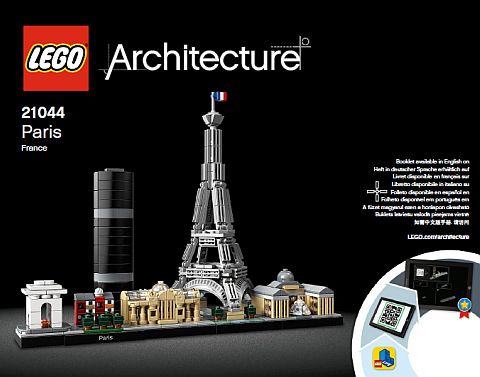
I really like the angling of the Eiffel Tower in relation to the other buildings, and the printed arches at the bottom of the tower are very effective. The same printed 1×1 plates that were in the other set are also used here. They are great for adding small details to already tiny buildings. On such a small scale, it’s very important to take advantage of the shapes of small LEGO pieces. This is especially visible in the construction of the Grand Palace.
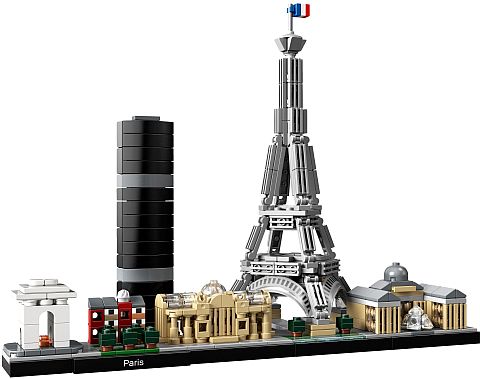
Here again, the included booklet contains information about the designer, architecture and history of each structure, as well as historical facts about Paris and its architectural heritage. The set measures about 8” (22cm) high, 11” (28cm) wide and 4” (11cm) deep. The total piece-count is 694 pieces, and the price is $49.99. You can get it at the LEGO Architecture section of the Online LEGO Shop.
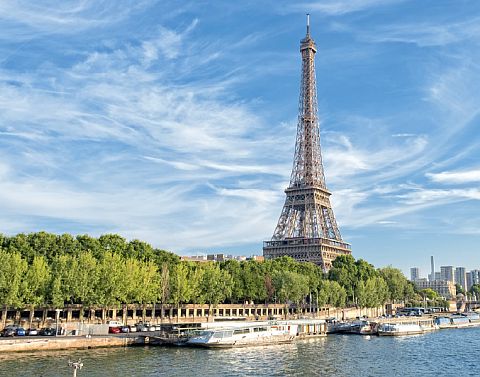
Although LEGO Architecture sets may not be as exciting as sets based on movies and sets with lots of play-features, they do have a dedicated and appreciative following. Putting together LEGO Architecture sets is always full of delightful surprises as you are presented with clever and unusual building techniques. The sets also look great on display both in the home and at the office, and thus are especially appealing to adult LEGO fans.
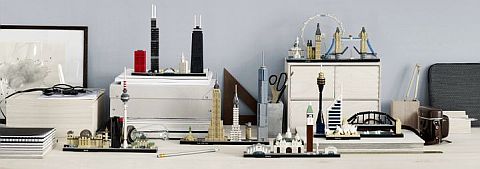
The LEGO Architecture series includes stand-alone structures, like the #21029 LEGO Architecture Buckingham Palace, the #21030 LEGO Architecture United States Capitol Building, the #21035 LEGO Architecture Solomon R. Guggenheim Museum, the #21041 LEGO Architecture Great Wall of China, the #21042 LEGO Architecture Statue of Liberty, and many more. These sets tend to be larger, more involved to build, and more expensive. The above-mentioned LEGO Architecture Skyline series includes several buildings that represent a city on a small scale. They are usually more interesting to build for beginners, and they also make excellent gifts for those new to the LEGO hobby. You can check out the current selection at the LEGO Architecture section of the Online LEGO Shop.
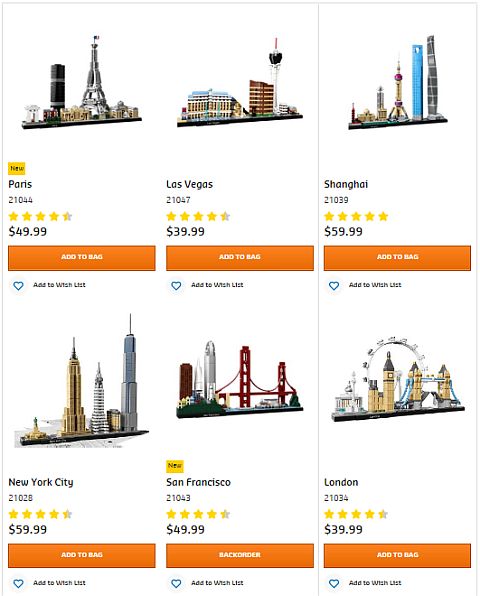
What do you think? How do you like the LEGO Architecture Skyline series? Do you have any of the sets already? Which one is your favorite? And do you prefer the stand-alone LEGO Architecture sets or the city skylines? Feel free to share and discuss in the comment section below! 😉
And you might also like to check out the following related posts:












The use of forced perspective is brilliant. Probably my favorite architecture set. I think Jang is a little too critical of the set, but I understand. He lived in San Francisco. The buildings are not in order in the other skyline sets either.
I like that they added a little flag on top of the Eiffel Tower. It’s a nice touch. And I agree with David that San Franciso looks like one of the best sets in the series.
How do you go about designing forced perspective yourself? Are there any specific guidelines?
I’m not an expert, but I suppose you can look at a photo of what you want to build, and work out the angles. Bridges and roads are the hardest because they are continuous lines. If you are just doing a background you can use mosaic techniques.
I can confirm that this is a great series, and it looks especially great in person. One of the impressive features of San Francisco is that even though it’s forced perspective, it looks good from any angle. Usually forced perspective only looks good from limited angles.